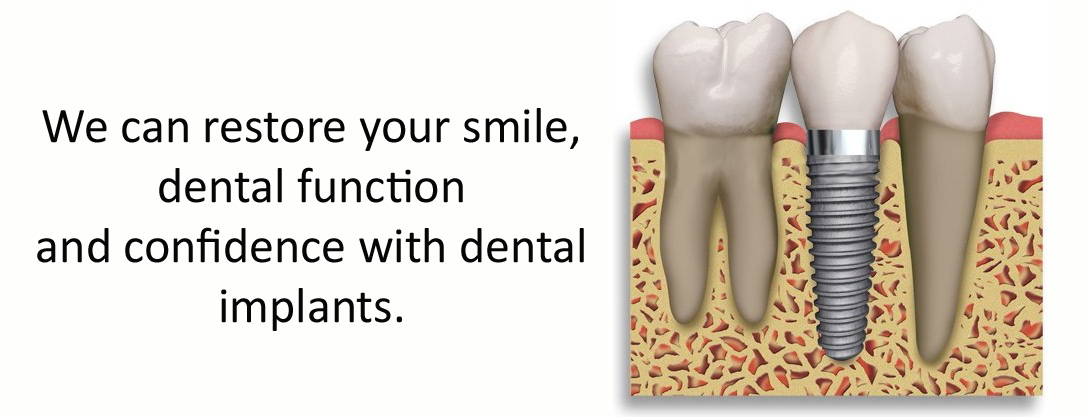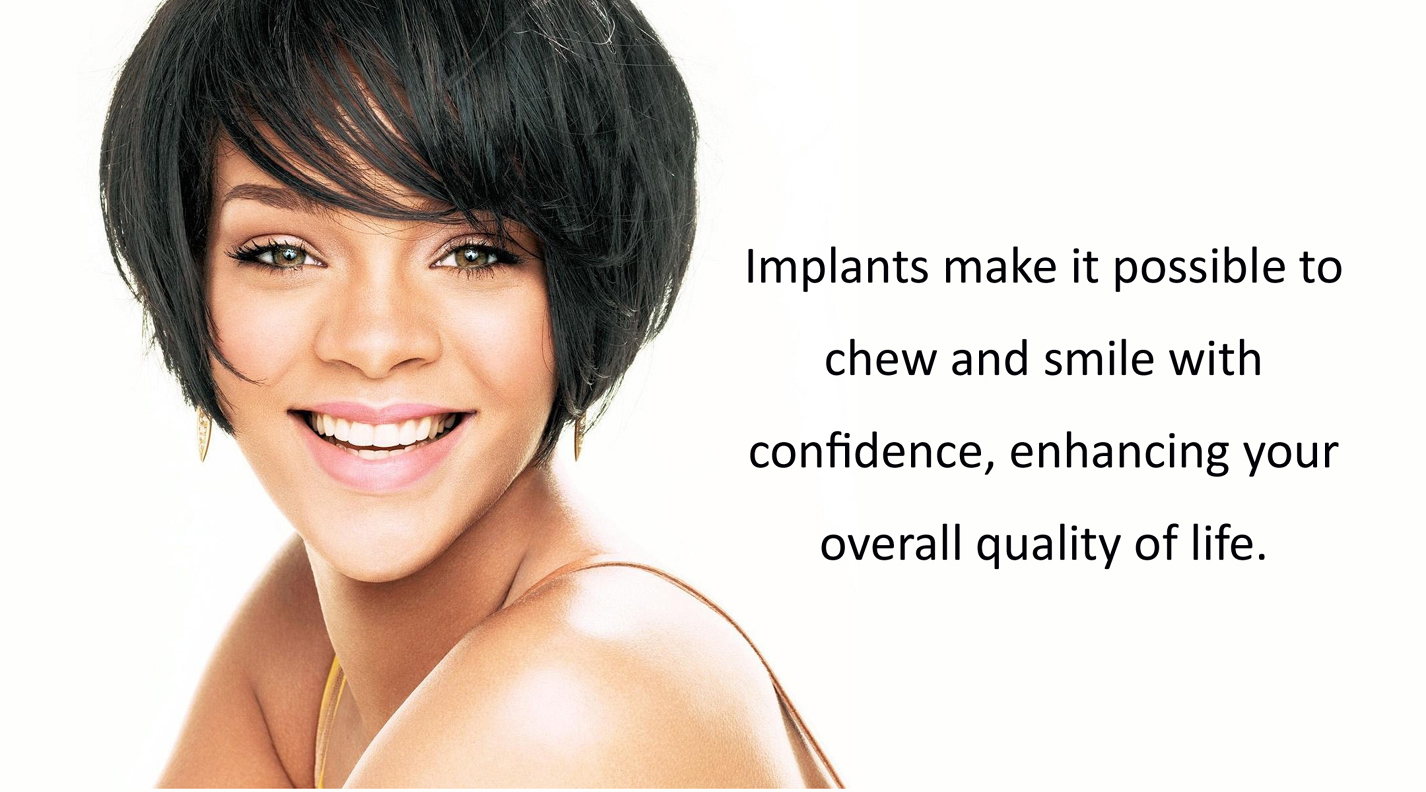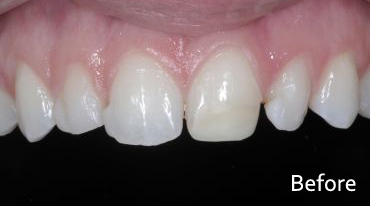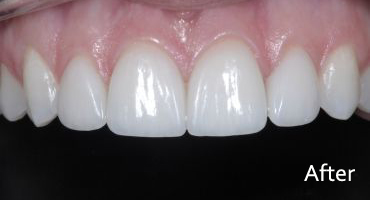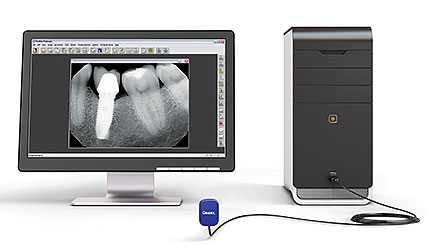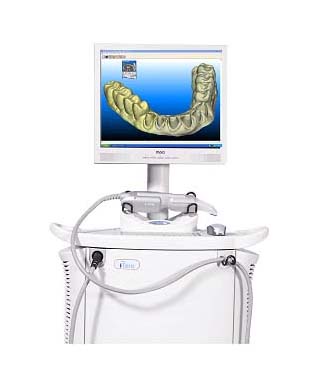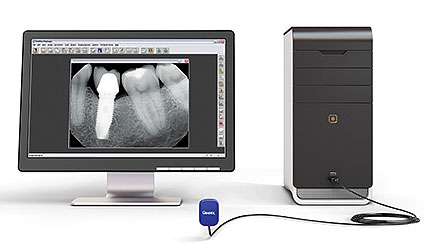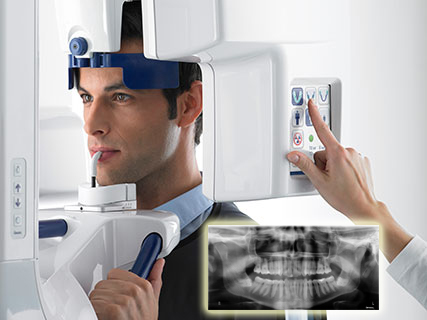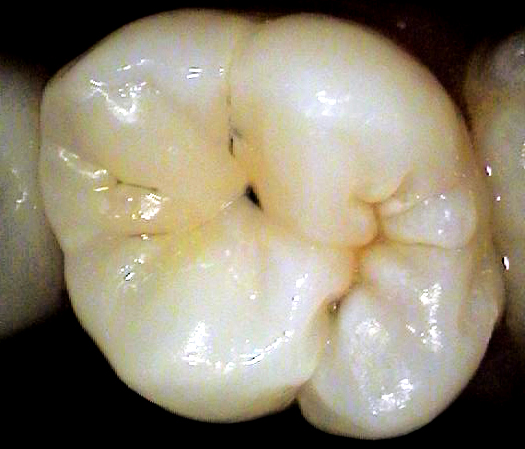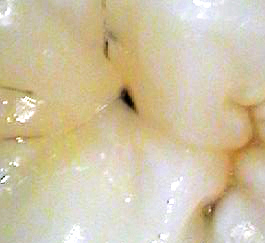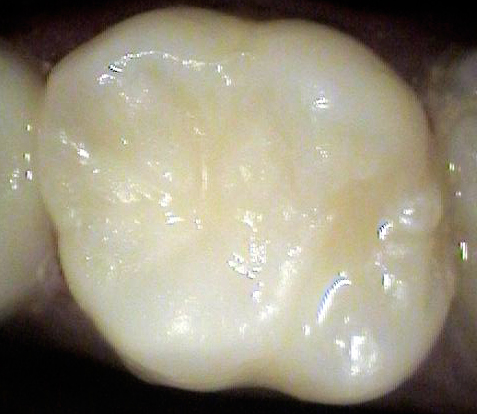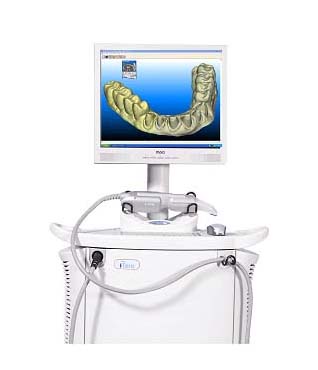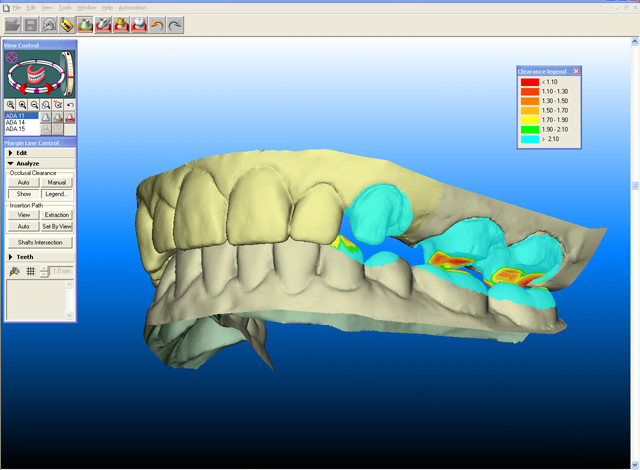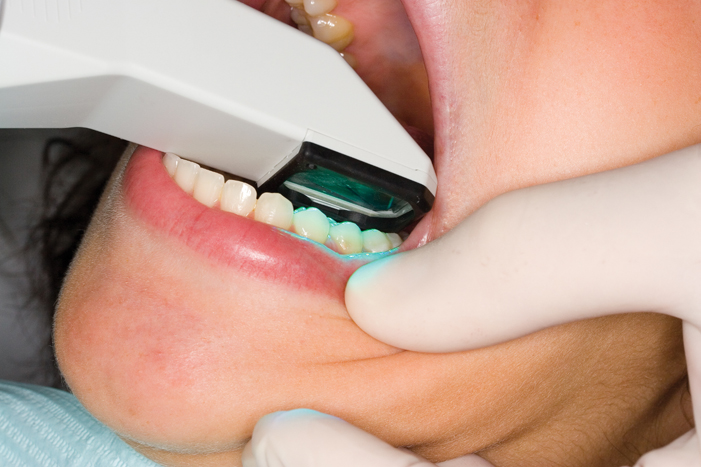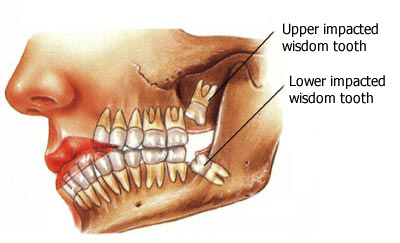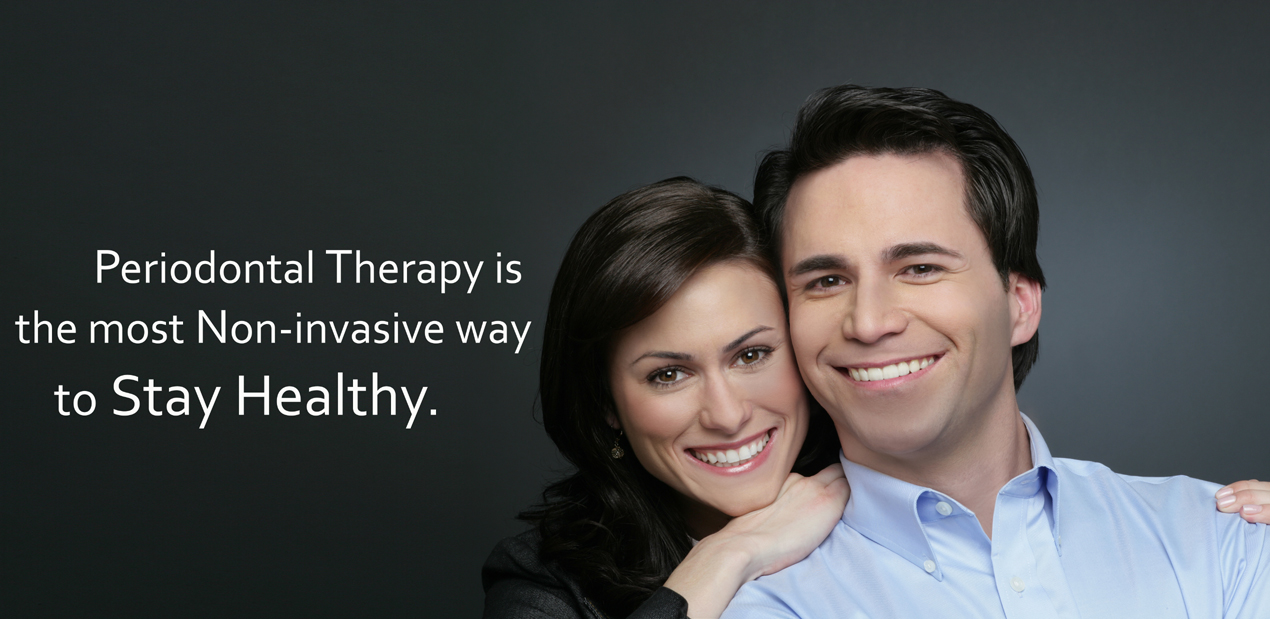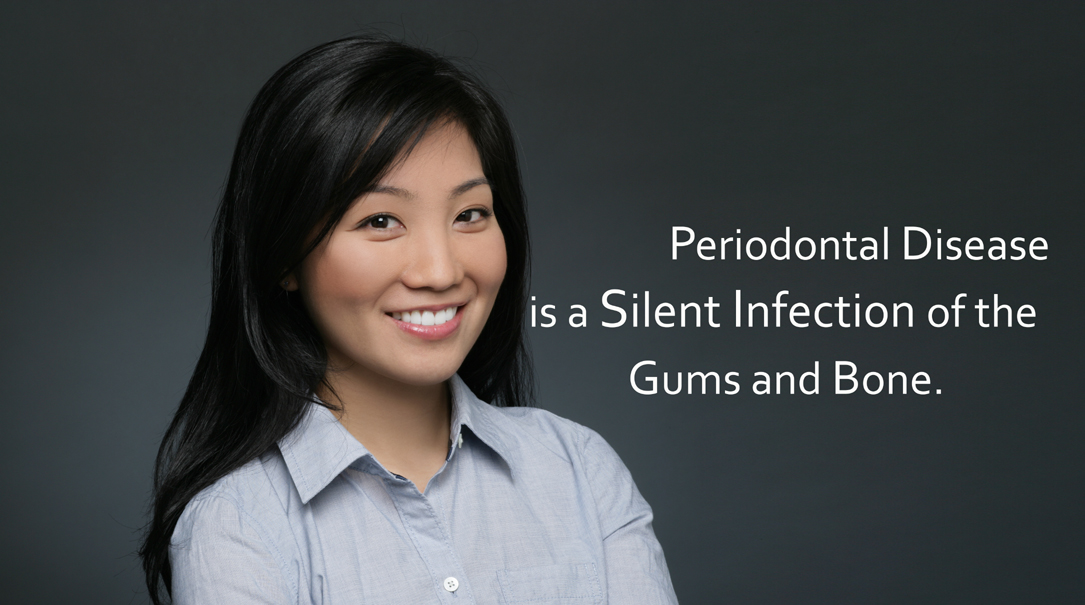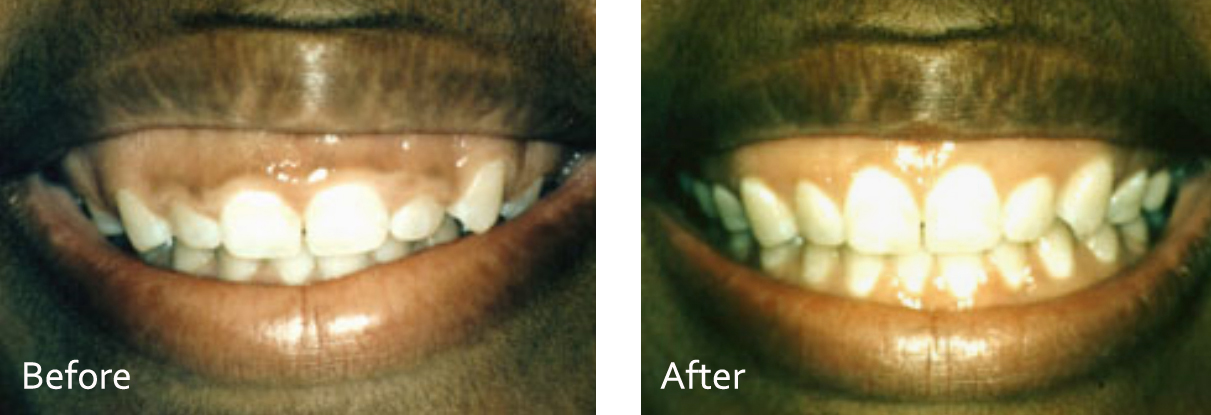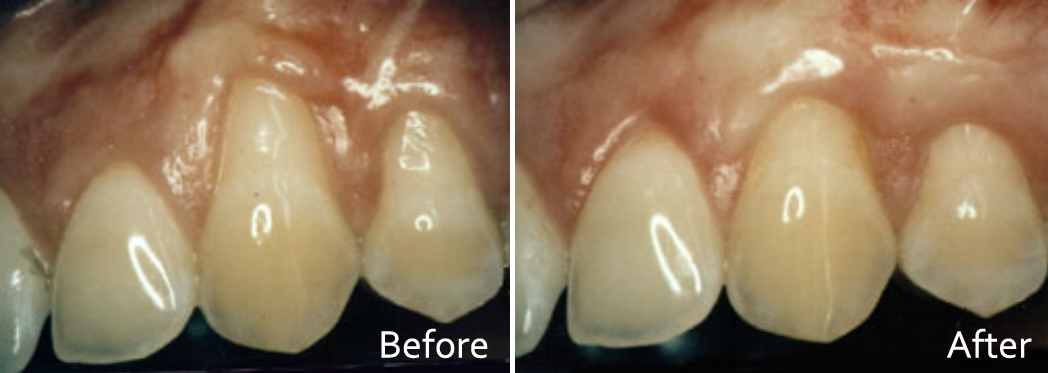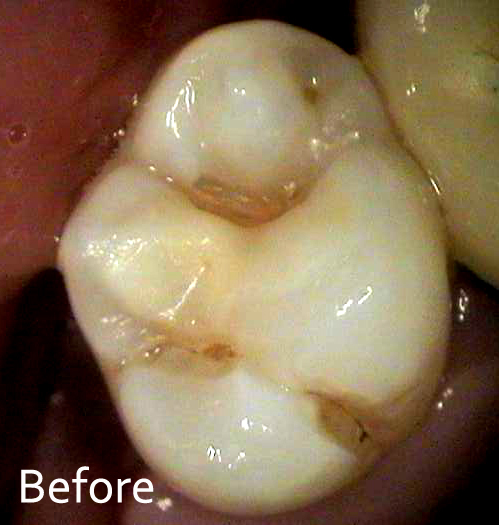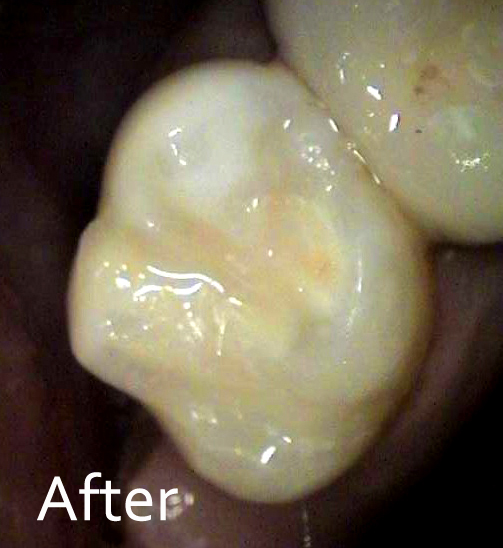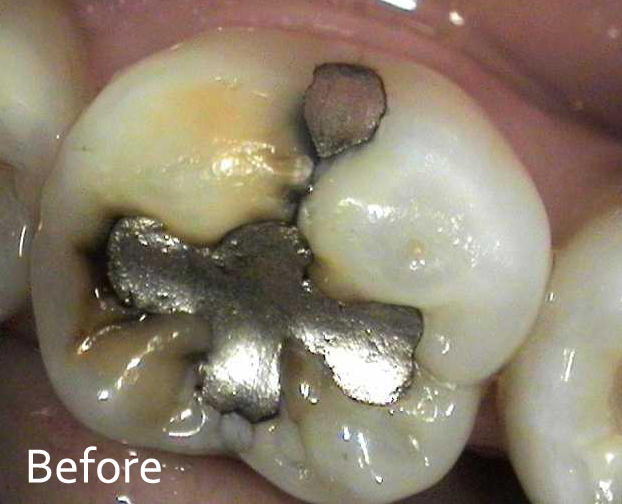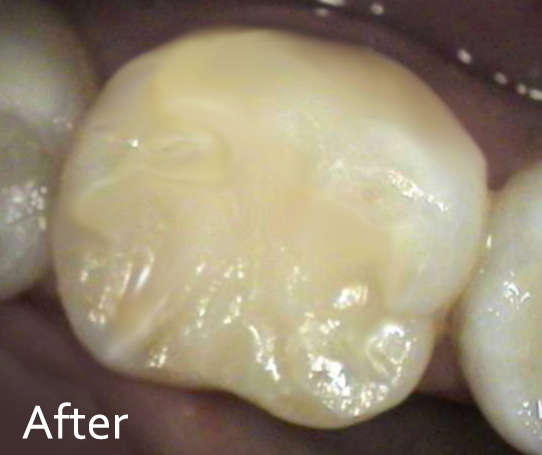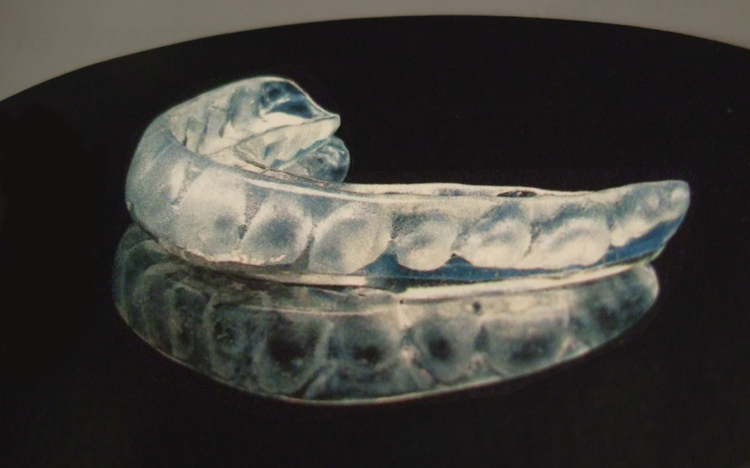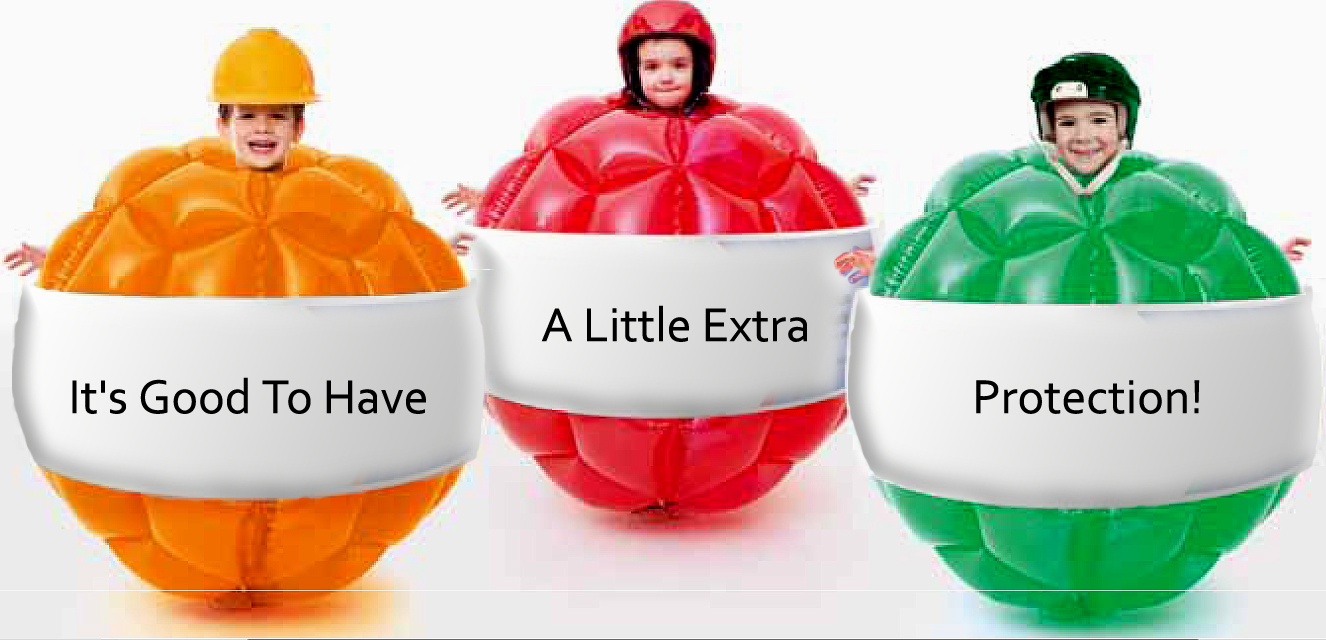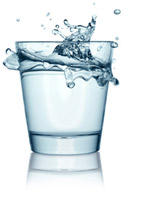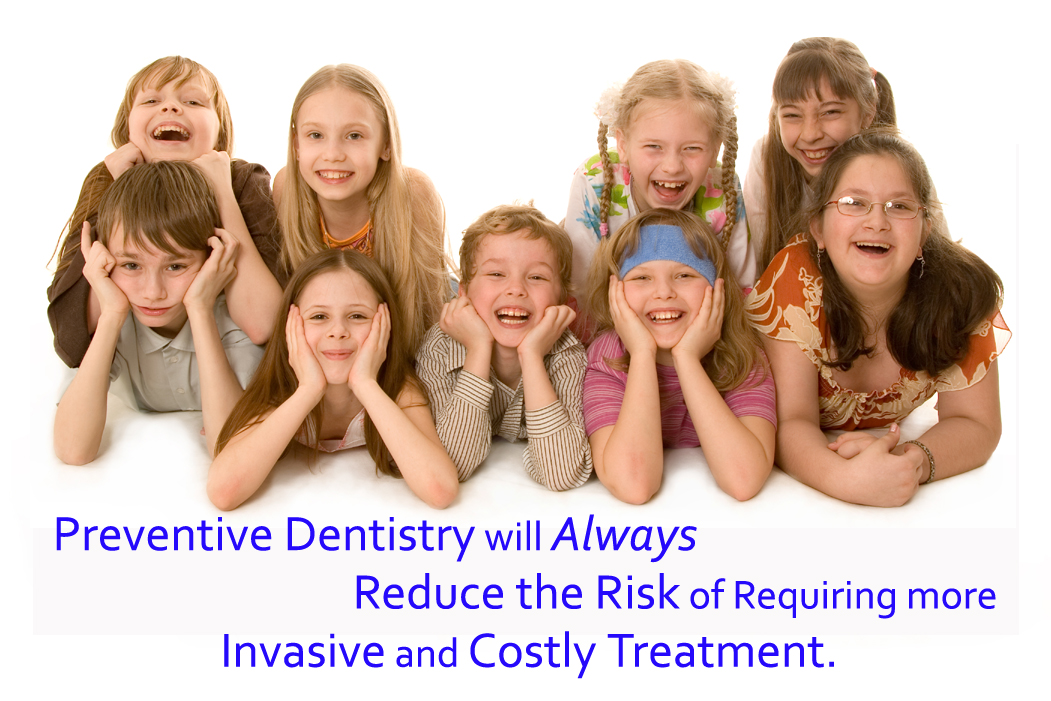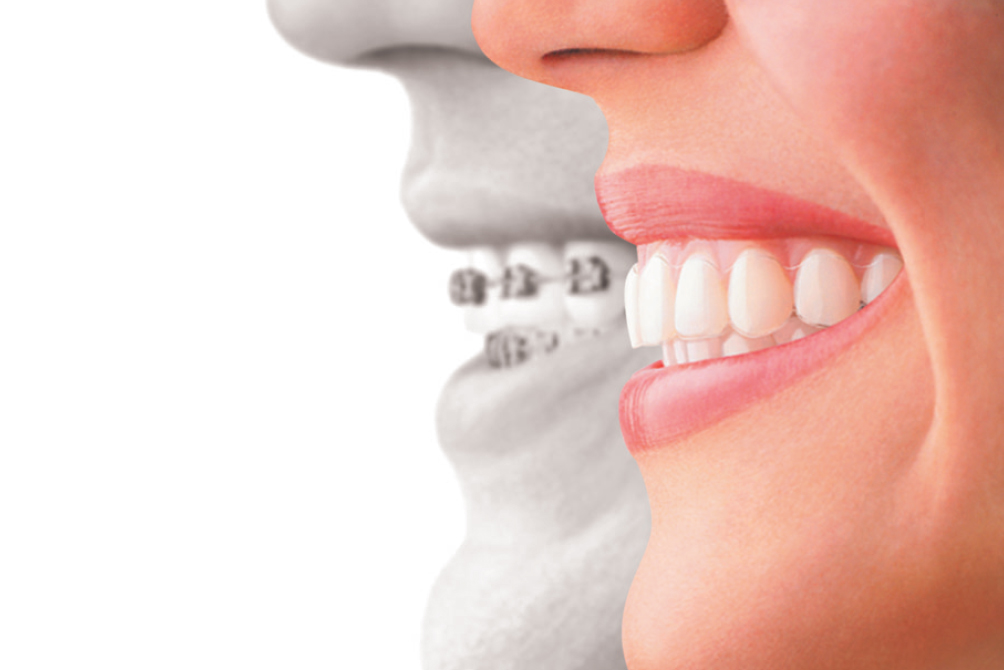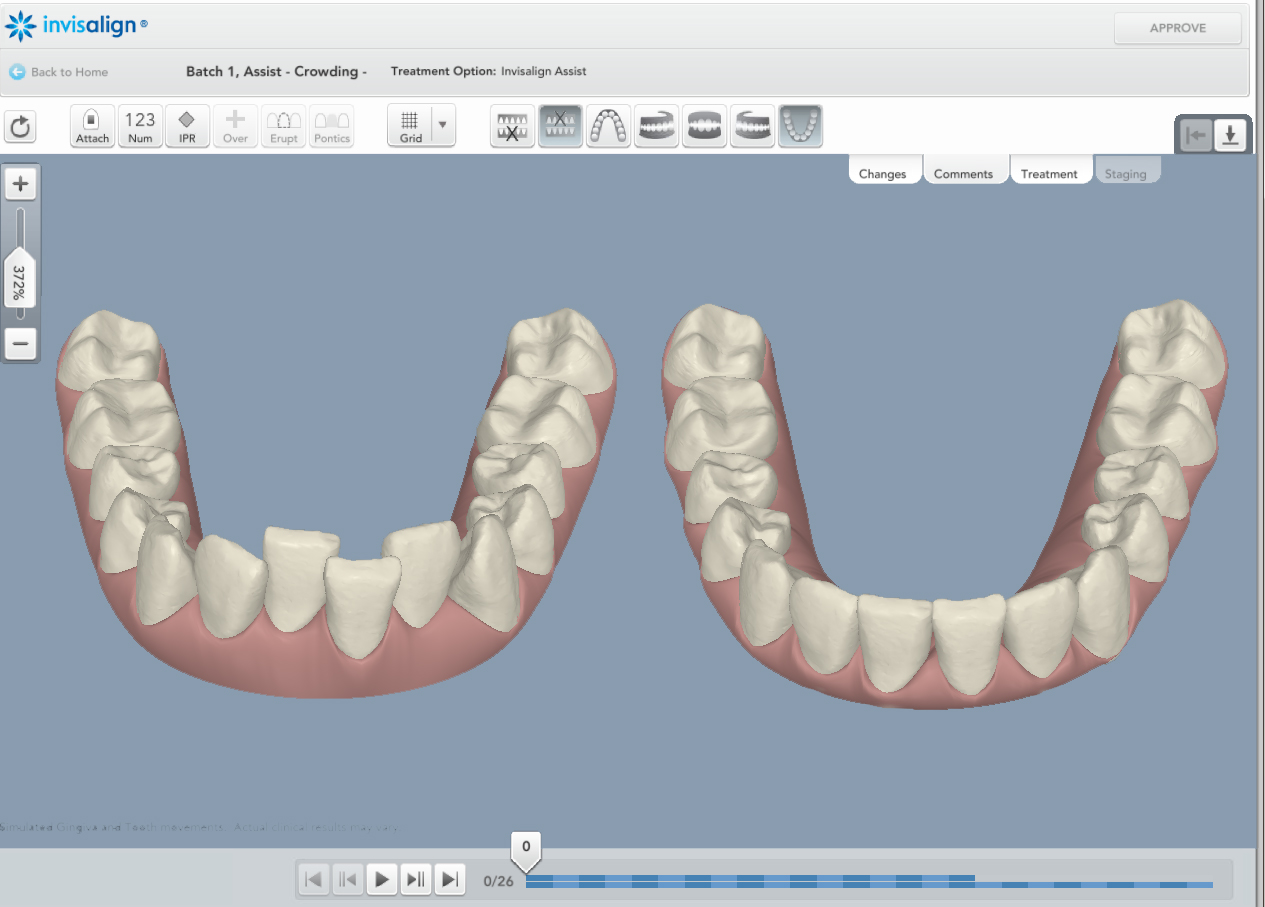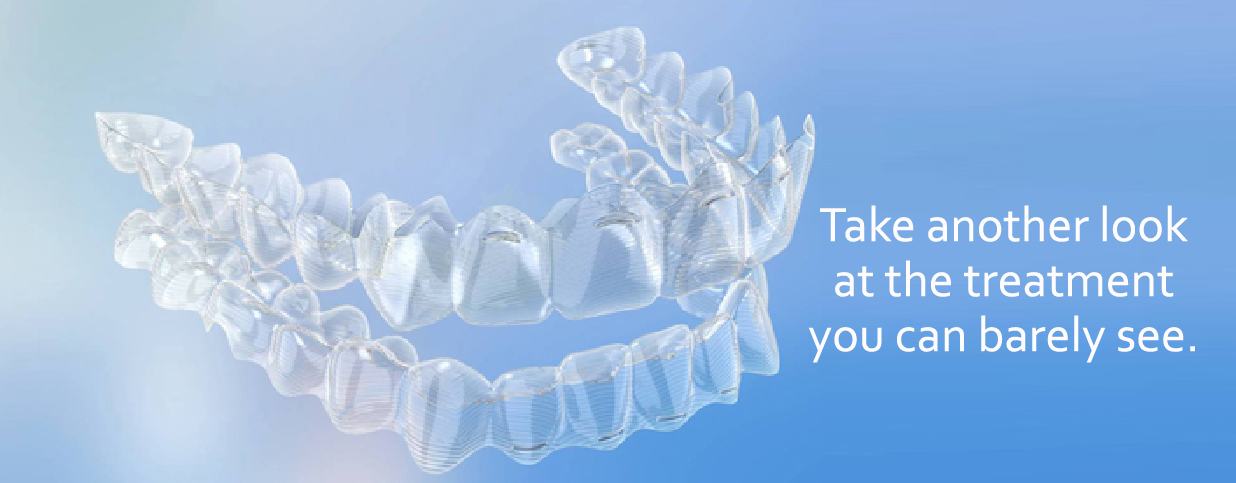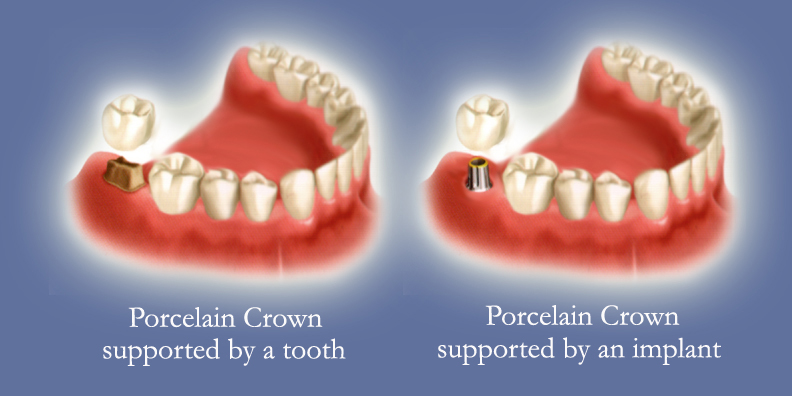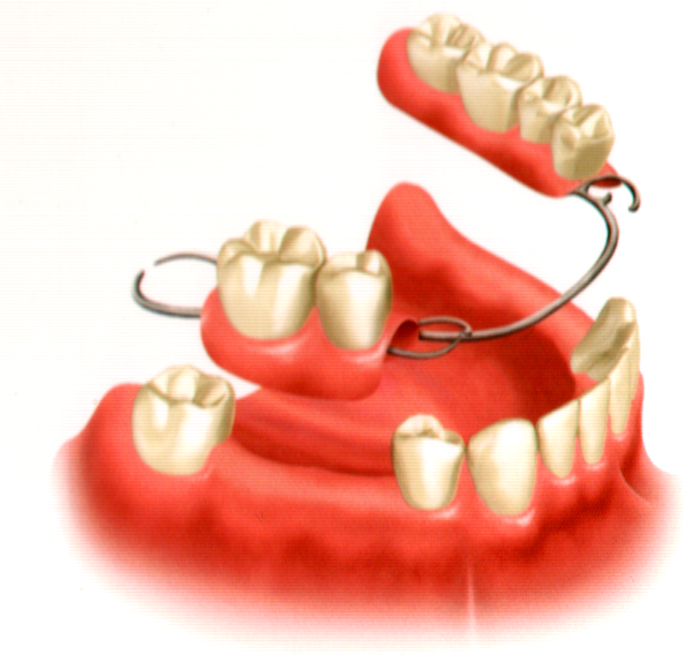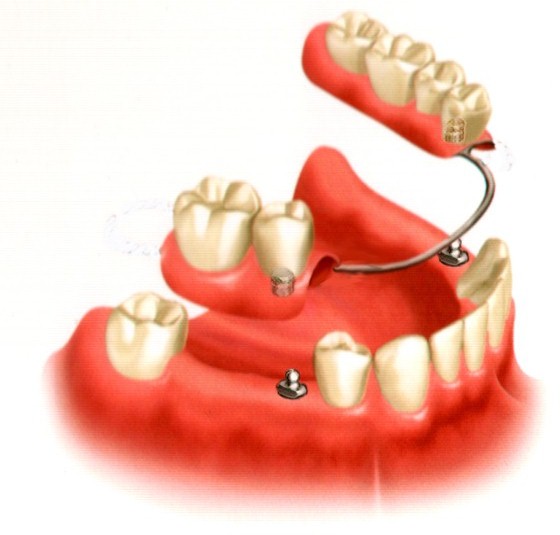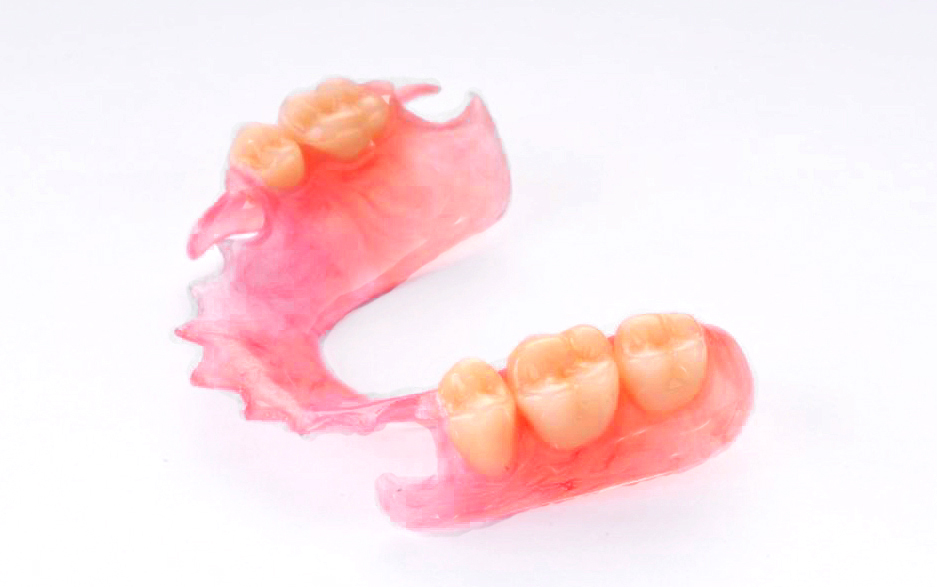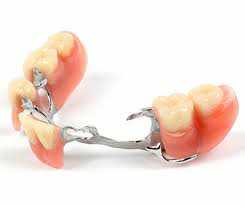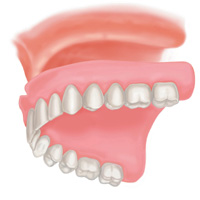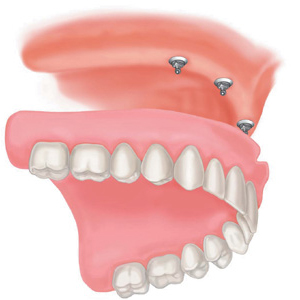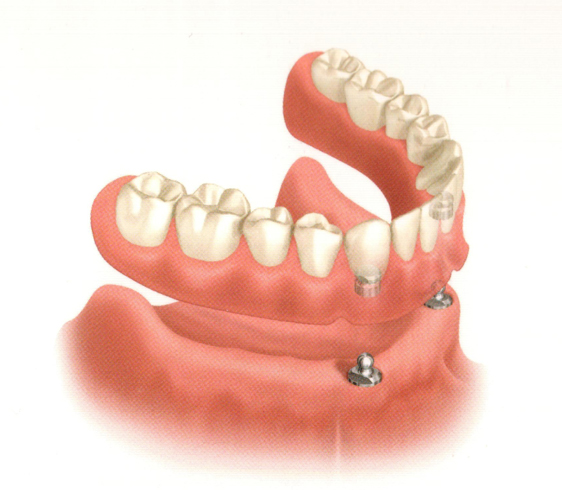
We are able to provide our patients with the highest level of quality in general and cosmetic dental care. This has been achieved by adapting the most advanced techniques and technologies available.
Our caring and knowledgeable team will make your visits as comfortable and rewarding as possible.
Please select one of the following topics for some information regarding treatment at Westmount Dental.
Oral Cancer Screening
 It is estimated that 3,400 new cases of oral cancer are diagnosed in Canada every year, and 30,000 in the United States. We believe that the most important part of your visit to Westmount Dental is our Cancer Screening Examination.
It is estimated that 3,400 new cases of oral cancer are diagnosed in Canada every year, and 30,000 in the United States. We believe that the most important part of your visit to Westmount Dental is our Cancer Screening Examination.Our ultimate focus is to diagnose conditions as early as possible and to recommend treatment that would prevent conditions from becoming worse. This is not limited to detecting tooth decay only.
As an integral component of your oral health regime, our professional team of Dentists and Hygienists assess the skin lining your mouth for potential signs and symptoms of oral cancer.
While it may not be obvious to you that we are performing this assessment, our eyes are constantly scanning and examining the tissues in your mouth for any variations from the norm.
Oral cancer is any abnormal growth and spread of cells in the oral cavity including lips, tongue, hard and soft palate (roof of the mouth), under the tongue, back of the throat, and gums.
Some signs and symptoms include:
- Painless sores in the mouth that do not heal within two weeks
- Dark red or white patches in the mouth
- New lumps or bumps located on the lips, tongue or neck
Early detection of oral cancer can greatly increase the success of treatment and reduce the likelihood that the cancer would spread to other parts of the body.At Westmount Dental, we routinely perform oral biopsies and submit suspicious tissue samples to the University of Toronto Pathology Department for assessment. Since the turn-around time is short, we can provide you with the information you need to ease your worries or guide you through the next appropriate steps as soon as possible.
If you notice any of these signs and symptoms in your mouth ask us to perform an Oral Cancer Screening.
We hope that you are comforted in the fact of knowing that we are repeatedly examining your mouth even though we may not tell you each and every time we do so.
Children's Dentistry
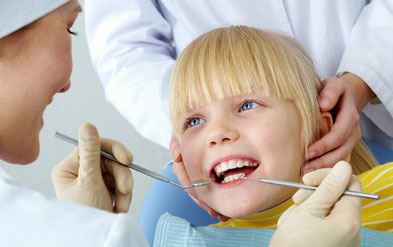 We understand that a unique and individual approach is required to treat children (and most adults too!).
We understand that a unique and individual approach is required to treat children (and most adults too!).Our Doctors truly believe that overcoming the anxiety of visiting the dentist is closely tied to changing perceptions through positive experiences.
We all know that first impressions can last a lifetime. Whether your child has been seeing a dentist regularly or is coming to our office for their first dental visit our Doctors and our team will go the extra mile to make sure that every visit to our office is a special one.
We have a play area for the children in the reception room with a flat screen TV and Nintendo with child friendly games and DVD’s. Each of our treatment rooms is equipped with a TV and DVD player so your child can watch their favorite movie to help them feel more comfortable during their treatment.
Most importantly, our Doctors and team of professionals use specific terminology and techniques to ensure your child’s safety, help them enjoy their visit, ensure that they leave with a smile and are excited to return.
We change your perceptions through positive experiences.
Dental Implants
When people lose permanent teeth due to injury, disease or extraction, a dental implant is the most advanced treatment available to replace missing teeth. Restorations on dental implants generally look, feel and act like natural teeth.
An implant is a special surgical grade titanium post, manufactured with highly precise specifications under strict sterile conditions. It is inserted surgically into the jawbone below the gum surface. As the bone bonds to the post, it forms a secure foundation onto which your new teeth are then attached and shaped to match your mouth.
Tooth loss inevitably results in bone loss, similar to the atrophy that occurs in muscles from lack of use. Bone loss and lack of teeth can result in visible defects in your smile, dramatically affect your ability to chew, and compromise the integrity of your remaining teeth.
Dental implants are superior to other tooth replacement options because they are solid, secure, and esthetically pleasing. Biologically, the implant preserves your natural bone by stimulating it to remain after the tooth has been removed. The implant process eliminates the need to remove healthy tooth structure often required for other tooth replacement options. Additionally, dental implants eliminate the pain and discomfort associated with wearing dentures.
Porcelain Veneers
Many people want a brighter, more attractive smile but have chipped, discoloured, unevenly spaced, or even slightly crooked front teeth. If this sounds like a problem you would like corrected, porcelain veneers may be able to take your smile from average to dazzling.
Porcelain veneers are rapidly becoming the most commonly used procedure to enhance the beauty of one’s smile due to their simplicity and versatility. They are used for many of the same reasons as bonding but offer advantages in color stability and a much
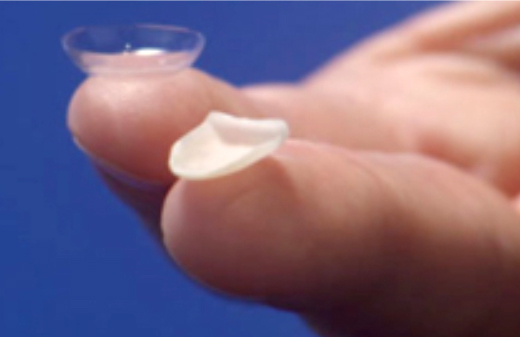 longer life expectancy. Made of thin shells of porcelain, veneers bond to the front of your teeth and can improve the color, shape, size and appearance of your teeth.
longer life expectancy. Made of thin shells of porcelain, veneers bond to the front of your teeth and can improve the color, shape, size and appearance of your teeth.Our porcelain veneer technique allows us to remove the least amount of tooth structure while still achieving the best possible aesthetic results. Their resemblance to healthy white tooth enamel is unsurpassed by other restorative options.
The treatment usually involves only two appointments. The number of pre-treatment visits, to work out details to ensure predictable results depends on the complexity of your situation and the changes you desire.
Once bonded to your teeth, veneers will blend seamlessly, without any signs that you have had any dental work done.
It’s like having a smile makeover!
We will make your smile look younger and healthier,
and boost your confidence.Root Canal Therapy
There are several situations in which the tooth’s nerve cannot repair itself. Examples include persistent or spontaneous sensitivity, swelling, throbbing or aching, decay that is deep and extends into the nerve, or trauma that injures the nerve tissue.
At this point, the only way to save the tooth is to treat it with root canal therapy. This process involves cleaning and disinfecting the tubes within the tooth (“canals”) and then placing a restorative material to seal these canals so that bacteria cannot re-enter.
If you anticipate that a root canal treatment will be a painful experience, then you have been misled. At Westmount Dental, with the effective use of anesthesia and modern techniques, most root canal treatments can be completed in one visit, often within an hour.
Tooth Whitening
For Your Comfort
Our whitening systems offer safer solutions to teeth whitening when compared to commercial brands, and is administered through your dental professional.Tooth whitening is a safe and effective way to brighten most people’s smiles. It is available in a variety of methods and concentrations. The two most common methods are Custom-Tray Whitening which is done in the comfort of your home, and Laser Whitening which is performed in our clinic. Since each option has different advantages and disadvantages, a consultation with our Dentists and Hygienists is integral to determining if you are a candidate for treatment and which treatment is best for you.
For Your Convenience
With 15 minutes per day you will notice a remarkable difference in your smile with our take-home custom whitening. Alternatively, our laser-whitening in-office treatment can whiten your teeth in less than an hour. Now that’s something to smile about!Eliminate Tough Stains
We provide a whitening solution that is safe on the enamel that can penetrate deeply into the “pores” of your teeth, removing stains that have accumulated over the years. Our whitening solutions contain Potassium Nitrate which protects teeth from excessive sensitivity during and after treatment.Affordable & Efficient
Compared to most cosmetic dental offices Toronto, our whitening systems are reasonably priced. We will never expose you to teaser rates, fine-print surprises or gimmicks to attract you to become a patient of our office. We treat all of our new and loyal patients equally.Consider This …
If you are thinking of other cosmetic improvements, such as crowns, porcelain veneers, or replacing old discoloured fillings, it may be worth considering whitening your teeth first. Then, any restorations we make for you can be matched to the whitened teeth to get an overall great result.Laughing Gas: Helping You Relax During Your Treatment
If the thought of going to the dentist makes you feel anxious, this option may be for you. Imagine no longer being afraid to go to the dentist or needing multiple visits to complete your treatment. Your dental health is important and you should not neglect it any longer.
Nitrous Oxide (“Laughing Gas”) Conscious Sedation is as simple as breathing.
You can relax while we improve your smile.
Our ‘Green’ Commitment
At Westmount Dental, we aim to have a more positive environmental consequence.
Our office was designed with the intent to help protect our environment and examples include:
- Paperless charting
- Electronic insurance submissions
- Digital imaging
- Digital x-ray radiography
- Digital impression scanning
- Equipment that maximizes efficiency and minimizes resource consumption
- Use of environmentally-responsible products and supplies
Using digital radiography is unquestionably one of the ‘greenest’ decisions we have made. Reduced radiation exposure to patients has obvious ‘green’ implications. Likewise, eliminating chemicals and lead-backed films is great for the environment. Additionally, our iTero scanner allows us to completely by-pass the need for impressions with materials that occupy our land-fills and take years to decompose. Our patients recognize our efforts and how it makes Westmount Dental stand apart from other dental office that continue to use conventional x-ray radiographs and impression materials.
Digital Radiography
To improve your care, we use a new way of looking into your mouth – digital radiography and digital intra-oral photography. These new technologies are precise. We immediately get a large, clear and accurate image on the computer screen, right next to your chair.
In addition to the environmental benefits of digital radiography, improved efficiency, improved patient communication, and improved patient care are only a few of the most obvious reasons why Westmount Dental uses digital instead of film-based imaging.
Minimal Radiation
Radiographs are integral in the detection of diseases and cancer in hard and soft tissue. Digital radiographs use up to several times less radiation than conventional radiographs, allowing us to take the necessary number of diagnostic images while exposing you to as little radiation as possible.To place this into perspective, a single conventional (film) radiograph exposes a patient to the same amount of background radiation that we are all exposed to within a 10-day period. At Westmount Dental, the equivalent dose would be several digital radiographs. It is interesting to note that we take, on average, four to six radiographs per patient every 12-18 months.
Environmentally Friendly
In an effort to conserve resources and preserve our environment, we use digital radiography as it does not generate waste or polluting agents when compared to conventional radiographs.Working with Magnification
Our digital radiography and intra-oral photography provide high-powered magnification during your visit so that our Doctors can precisely examine your teeth and gums and detect microscopic problems that may not be visible to the naked eye. This means a dental problem can be treated before it has a chance to become more serious or painful. In addition, the magnification allows our team to treat the problem in a much more precise manner, often less invasively, and therefore transforms the way we practice dentistry.
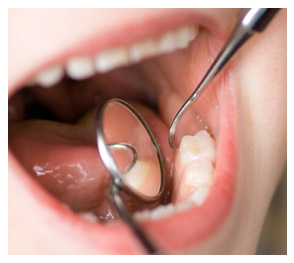 This view is typically what a Doctor sees with the naked eye during a conventional clinical examination. The actual sizes of teeth are typically less than 10mm wide as seen here with this molar.
This view is typically what a Doctor sees with the naked eye during a conventional clinical examination. The actual sizes of teeth are typically less than 10mm wide as seen here with this molar.With our digital imaging and Dental Loupes eyewear, our Doctors have the ability to magnify a tooth up to 40 times the original size potentially revealing conditions that would otherwise go unnoticed.
Digital Impressions with iTero
An accurate impression is fundamental to a successful outcome in dentistry. Providing digital impression procedures with the iTero laser and optical scanner provides consistent, superior results and numerous other benefits for the clinician, patient and dental laboratory.
Efficiency & Predictability
The iTero scanner captures the surface and contours of the tooth and gums often in less time than it takes for impression material to set, reducing treatment time for you as a patient. The unmatched precision of the iTero digital impressions provides crowns, bridges and Invisalign aligners that require minimal adjustment and an accurate fit, an other source of predictable time savings for patients.Real-Time Digital Display
The unmatched visualisation of the tooth is one of the greatest benefits of iTero. Dentists can view this area from a full 360 degrees, enabling correction or confirmation of the tooth preparation design.Effective Communication
The data files of the digital impression are then sent electronically to our dental laboratories, enhancing the speed of fabrication of dental restorations and orthodontic aligners.Patient Experience
Westmount Dental enjoys a distinct advantage over other dental offices who adhere to the conventional impression method. With iTero patients become engaged in the process as they see their teeth and dental work on-screen. This provides our Doctors with an excellent educational tool that helps patients understand the nature of their treatment.Environmentally Conscious
Use of the digital impression process conserves resources and preserves our environment. It eliminates the need for materials that generate waste when compared to conventional impression materials.Wisdom Teeth Extraction
“Wisdom teeth” is the nickname used for the third adult molars and are typically the last teeth to grow into the mouth, often appearing between the ages of 18-24. Many people do not have enough room in their jaws for these teeth to erupt alongside the others. Therefore, some remain buried and others partially come through. Since these teeth are so far back in the mouth, keeping them properly cleaned is often very difficult for the patient and the dental team. Consequently, the wisdom teeth are at risk of developing decay, gum disease, infection and cysts.
The decision to remove wisdom teeth that are not (yet) causing problems remains debatable. While the choice to keep or remove the wisdom teeth will always be yours to make, our dental team will inform you of your risk of developing problems if you do not extract them.
It is possible to remove wisdom teeth relatively painlessly using local anesthetic; however, at Westmount Dental we offer Nitrous Oxide (“Laughing Gas”) Conscious Sedation for an additional level of comfort.
Active Periodontal Therapy
Periodontal disease has reached levels of epidemic proportions, with gingivitis and periodontitis estimated to affect as many as 75% of the adult population in their lifetime.
Patients are becoming increasingly more aware that there is a body attached to their mouth! Research has proven that what is going on in a patient’s mouth can and is affecting their overall health. Studies have also shown that medical conditions and medications directly affect a patient’s oral health.
Current research and the latest understanding of periodontal disease now makes it possible for a knowledgeable dentist to provide successful dental care to reduce the risk of oral and physical disease with a course of conservative periodontal treatment.
At Westmount Dental, we stress that your periodontal health should be achieved in the least invasive manner as possible. This is often accomplished through non-surgical periodontal treatment, including scaling and root planing (a meticulous cleaning and careful smoothing of the tooth surfaces to remove bacteria), followed by adjunctive therapy such as oral hygiene instruction and antibiotics.
After scaling and root planing is performed many patients do not require any further active treatment. However, the majority of patients will require ongoing maintenance therapy to sustain health. Non-surgical therapy does have its limitations however, and when health is not achieved surgery may be indicated to restore periodontal anatomy damaged by this disease.
Periodontal disease affects the gums, ligaments and bone that support your teeth. The earliest warning sign is when the gums become red, swollen, and bleed easily when touched. Most often there is no discomfort at this stage, yet the disease has gained a foothold and is now known as “gingivitis.” Gingivitis is reversible with improved oral hygiene techniques and a professional cleaning, what we call Active Periodontal Treatment. Left untreated, however, the danger exists that it will progress into an irreversible condition – periodontitis – that damages the bone supporting the teeth.
Periodontitis is a more advanced disease. Bone and tissues supporting the teeth are destroyed yet an individual may be unaware of the problem. When this occurs the gum attachment begins separating from the teeth creating “pockets”. These pockets harbour millions of bacteria trapped in a plaque that sticks to the teeth. Unfortunately, the mouth is a perfect incubator as it is warm, dark, and moist, with plenty of “food” for the bacteria to metabolize. The result is that the bacterial plaque thrives and matures.
Periodontal diseases, including gingivitis and periodontitis, are serious infections that, if left untreated, can lead to tooth loss. The main cause of periodontal disease is bacterial accumulation however, additional factors also affect the health of your gums including smoking, genetic predisposition, puberty, pregnancy and menopause.
Persistent swollen, red or bleeding gums, tooth sensitivity,
gum tenderness, and bad breath are among the
warning signs of periodontal (gum) disease.Signs & Symptoms To Look Out For
Periodontal disease is often silent, meaning symptoms may not appear until an advanced stage of the disease. Similarly, high blood pressure and high cholesterol are also silent conditions, and it only hurts when you have a heart attack or stroke. Thankfully, periodontal disease has many warning signs that allow us to initiate a preventive and active treatment protocol before you experience pain and tooth loss.The warning signs include the following:
- Red, swollen or tender gums
- Bleeding while brushing or flossing
- Receding gums
- Loose teeth
- new or larger spaces between teeth
- increasing amounts of food getting stuck between your teeth
- Pus around your teeth
- Persistent bad breath
- A change in the way your teeth fit together when you bite
Periodontal Surgery
At Westmount Dental, we perform several surgical procedures to treat periodontal disease:
Pocket Reduction Therapy – Deep pockets of gum tissue form around teeth as bacteria accumulate, advance into and destroy the supporting bone. This procedure removes the disease-causing bacteria, eliminates the deep pocket, and rough tooth surfaces are smoothed.
Bone Regeneration – The treatment goal is to regenerate lost bone and tissue supporting your teeth caused by periodontal disease. Membranes and bone grafting materials are used to encourage your body’s natural ability to regenerate itself in order to strengthen the support of the tooth.
Crown Lengthening – Do you have a “gummy” smile? Do your teeth look too short? Your teeth may actually be the proper lengths, but are covered with too much gum tissue. Perhaps your tooth is decayed, broken below the gum line, or has insufficient tooth structure for a restoration. This periodontal procedure is available to lay the groundwork for restorative and cosmetic dentistry. During this procedure, excess gum and bone tissue are reshaped to expose more of your natural tooth. This can be done to one tooth to allow for a restoration to be placed, to even out your gum line, or to several teeth to expose a natural, broad smile.
Soft Tissue Grafting – A soft tissue graft (“gum graft”) aims to stop further dental problems, gum recession, and to improve the esthetics of your gum line. Gum recession may be due to aggressive tooth brushing or periodontal disease, resulting in the appearance of longer teeth and sensitivity to temperature. The procedure involves taking synthetic tissue or gum tissue from your palate and placing it around the tooth covering the recession defect.
Grinding & Clenching
If you wake up with a headache or a sore or stiff neck you may have been clenching or grinding your teeth while you have been sleeping. Other signs may include sensitive teeth, notches in your teeth near the gums, worn down or chipped teeth.
We can fabricate a custom-fit soft appliance that is worn nightly to absorb the painful and damaging forces of grinding or clenching.
Mouth / Sports Guards
 Would you ever consider letting your son or daughter play hockey without a helmet, so why would you send them out onto the ice with a mouth guard?
Would you ever consider letting your son or daughter play hockey without a helmet, so why would you send them out onto the ice with a mouth guard?A properly fitted mouth guard can prevent far more than just chipped or broken teeth. They also protect the supporting tissues of the mouth (gums and bone). In more serious injuries a mouth guard can reduce the risk of jaw fracture.
The long-term considerations of not wearing a mouth guard can be significant and involve invasive and costly treatment.
Minimizing the risk of injury to your face and teeth from sport-related traumas is of utmost importance. For this reason, when you are involved in activities exposing you to possible injuries, we encourage the use of high-quality protective mouth guards which are custom-made, tailored to fit your teeth, offering the best protection against injury and are the most comfortable to wear.
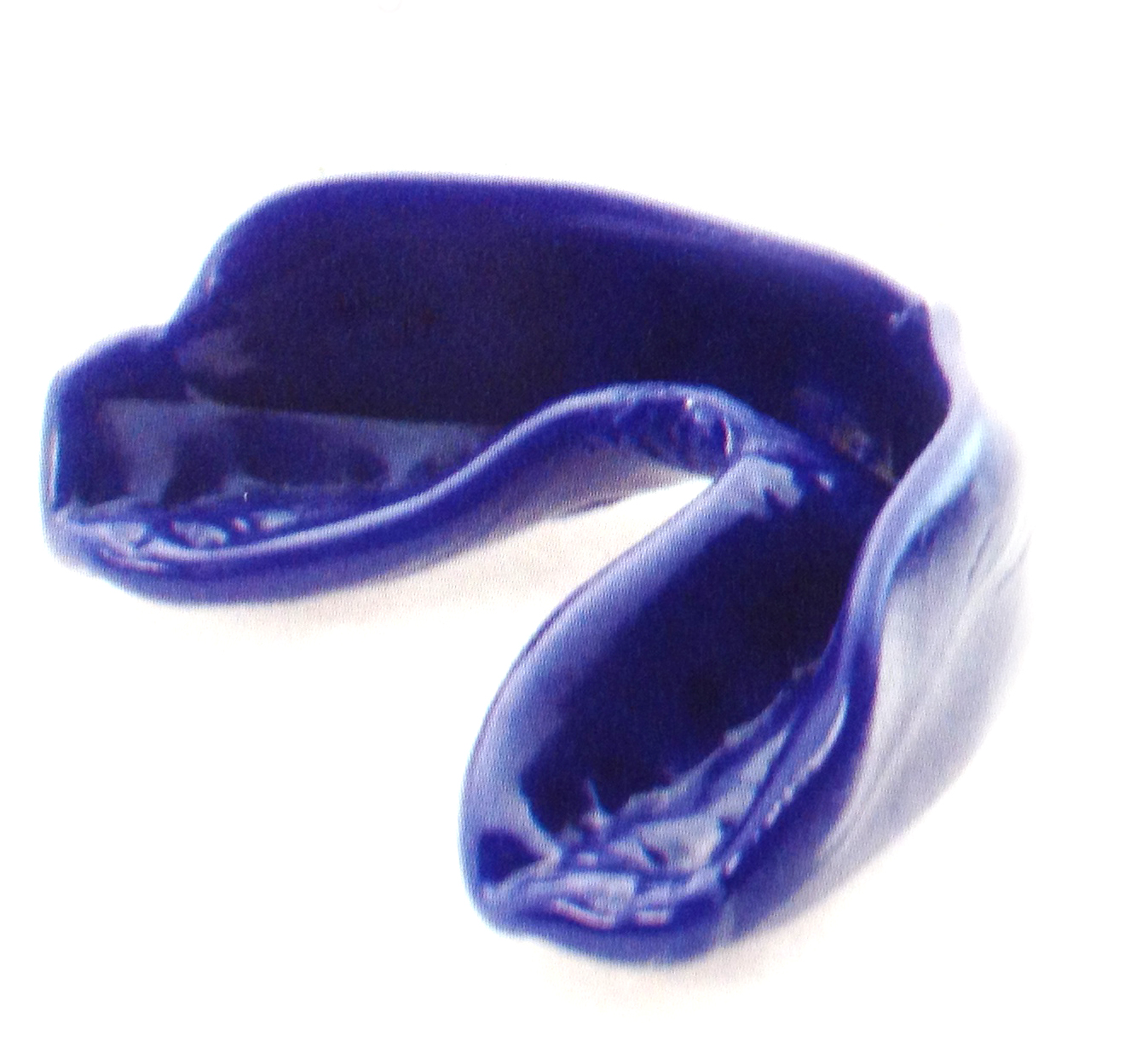 We do not recommend store-bought or boil-and-bite guards as they may not provide the protection that a custom-fit guard can.
We do not recommend store-bought or boil-and-bite guards as they may not provide the protection that a custom-fit guard can.Mouth guards are necessary in any sport where there might be a strong chance of contact with other participants or hard surfaces. Players who participate in sports such as football, hockey, basketball, ski racing, rugby, soccer, wrestling, lacrosse, gymnastics and martial arts should wear mouth-guards when practicing or competing.
Mouth guards are also a good idea for recreational activities such as skate-boarding, in-line skating and cycling.
Fluoride & Desensitizing
The World Health Organization states “fluoridation of water supplies, where possible, is the most effective public health measure for the prevention of dental decay.” Such a compelling statement demonstrates the global impact that water fluoridation has had since its introduction in the early 20th century.
Despite this endorsement, water fluoridation remains a controversial topical in Canada. The issue has made its way into the media as cities re-examine the decision of incorporating fluoride into their water supplies. We are facing a frequent questioning of the validity of fluoridation by reasonable people wanting to be reassured that policy-makers are abreast of the current evidence on safety and efficacy of fluoridation. The dentist’s task in presenting the science is made more difficult by the extremist tactics used by anti-fluoride organizations who are not interested in an objective assessment of the evidence but rather prefer the fear-mongering that seems to work so well in politics these days.
It is indeed ironic that the beneficial effects of fluoride in drinking water were discovered while studying its negative effects on health. It was while trying to show that fluoride was responsible for unsightly brown spots on tooth surfaces, the tell-tale signs of fluorosis, that the research instead uncovered its beneficial effects in protecting tooth enamel.
This true story highlights that, like any drug, fluoride has the potential to do both good and harm. Through in-depth research fluoride has been shown to have safe and beneficial effects for the public.
In my opinion, the improvements to oral health among Canadians as a result of the high quality of care provided by dental professionals would be undermined by the removal of fluoridation from the water supply.
We encourage all of our patients to become more familiar with the evidence as there is a lot available on the Ontario Dental Association website (www.youroralhealth.ca).
This section provides answers to some of the commonly asked questions regarding the use of fluoride as a preventative oral health measure.How Does Fluoride Work?
There are three main mechanism by which fluoride prevents caries: (1) By preventing demineralization (the loss of the mineral content of tooth structure); (2) By enhancing remineralization (the process of rebuilding and reinforcing tooth structure); and (3) By interfering with the ability of decay-causing bacteria to form acid.
Fluoride becomes incorporated into the tooth structure and is more resistant to acid demineralization by bacterial acids when compared to calcium. Fluoride also attracts calcium and phosphates to the tooth surface, promoting remineralization and is therefore more resistant to demineralization. Additionally, fluoride directly inhibits bacterial enzymes from creating the acid that is responsible for tooth decay.How is Fluoride Delivered?
Mass delivery through water fluoridation programs, in-office preparations and at-home regimens are the most common methods by which fluoride is delivered to the general population.

In our dental office, we provide fluoride gels, foams and varnishes as topical fluoride treatment and prevention of dental disease. Daily home use of fluoride toothpastes and mouth-rinses are a main delivery method for fluoride, and its widespread use has largely contributed to the general decline of dental decay.
What are the Effects of Fluoride?
Excessive fluoride ingested during tooth formation can cause permanent weakening and discolouration of the tooth enamel. Thankfully, extensive research has determined the ideal concentration of fluoride in public drinking water to exploit its benefits without placing the population at risk of developing any side-effects of water fluoridation. It is, however, very important to understand that young children who do not have the ability to spit should only use non-fluoridated toothpastes. By age 6-7, most children are able to spit and therefore we recommend the switch to using a pea-sized amount of fluoride toothpaste when brushing their teeth.
At Westmount Dental we often provide fluoride gels, foams and varnishes as a component of our preventive care program to lower the risk of developing decay and to treat tooth hypersensitivity.
Preventive Resin Restorations
A complete preventive dentistry program includes: brushing and flossing, use of fluoride, good nutrition, restoring fractured fillings and teeth, treating decay as soon as possible, and regular dental examinations. For maximum benefit, preventive resin restorations should be used as part of children’s and adults’ total preventive dental care.
Stay a step of ahead of the bacteria in your mouth.
Preventive Resin Restorations are fillings that are applied to the biting surfaces of teeth to prevent decay from spreading deeper into the more sensitive areas. Toothbrush bristles cannot effectively clean out bacteria from deep pits and narrow grooves. The trapped bacteria now have the opportunity to spread and cause decay. Preventive Resin Restorations flow into and coat the pits and grooves, creating a shallow and smooth surface so that food and bacteria simply slide off the tooth surfac
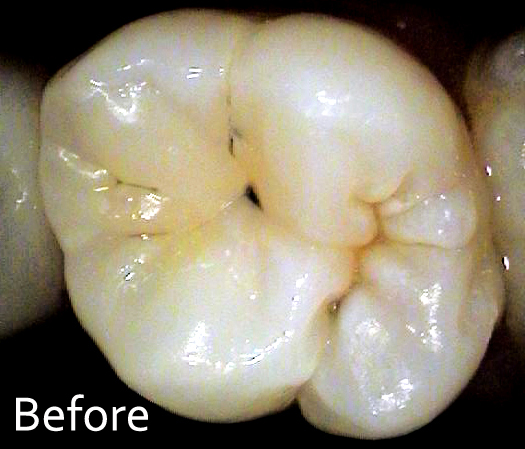
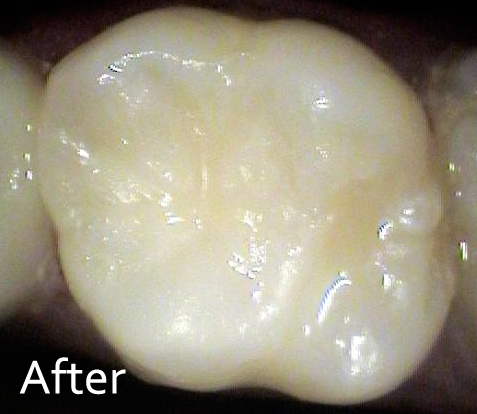
Waiting until the tooth becomes sensitive indicates that the decay has progressed to the deeper parts of the tooth and treating this decay usually requires anesthetic. So, why wait for sensitivity to develop and react to the problem? Prevent the decay from getting worse and treat your cavities as soon as they are detected.
We will always recommend early preventive treatment instead of waiting for the problem to get worse and then reacting to it. Appropriate use of Preventive Resin Restorations can save time, money and the discomfort associated with some dental procedures.
Invisalign Orthodontics
Forget everything you’ve heard about teeth straightening because now there’s breakthrough technology that lets you get the smile you always wanted without bands, brackets, or wires.
- Nearly Invisible – You can straighten your teeth without anyone knowing.
- Removable – You can eat and drink what you want.
- Better Oral Hygiene – Unlike braces, you can brush and floss normally to maintain healthy gums and teeth.
- Comfortable – There are no wires, metal or brackets to irritate your mouth.
- Less Treatment Time – Like traditional braces, the length of treatment depends on the complexity of the case. A typical Invisalign case takes about a year from start to finish.
Getting StartedThe first step is a free consultation with our Invisalign Certified Doctors. You will discover how Invisalign can provide you with the smile you desire. We will discuss your needs, treatment expectations and the Invisalign process. Your Doctor will take radiographs, pictures and impressions of your teeth, which Invisalign will use to create digital 3-D images of them. From these images your Doctor will map out a precise treatment plan, including the exact movements of your teeth. Using this same cutting-edge technology, your Doctor will even show you a virtual representation of how your teeth will move with Invisalign.
Getting Your Personal, Custom Aligners
Based on your individual treatment plan a series of custom-made, clear aligners are then created specifically for you. These aligners are made of a smooth, comfortable BPA-free plastic that will not irritate your cheeks and gums like traditional metal braces often do. Simply wear them throughout the day, and remove them when you eat or brush your teeth. As you wear each set of aligners, your teeth gently and gradually begin to shift into place. And because they are virtually invisible, most people won’t even notice you’re wearing them.
A Simple Process With Only Occasional Checkups
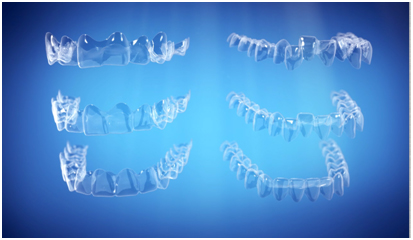 You will receive a series of custom-made clear aligners that will gradually move and align your teeth.
You will receive a series of custom-made clear aligners that will gradually move and align your teeth.
Approximately every two weeks, you will begin wearing a new set of aligners, advancing you to the next stage of your treatment.
To monitor your progress, you will have an examination with your Doctor every six weeks or so.
At every stage, you will be able to see how much closer you are to having the smile that reflects the real you.Straighter Teeth are Healthier Teeth and a Healthier You
Crooked or misaligned teeth affect 74% of adults. Left untreated, crooked teeth can develop into periodontal disease, create abnormal amounts of stress on teeth and jaws which can lead to premature wear. The effects of crooked teeth worsen over time and may adversely affect your overall health.
Correctly positioning your teeth for proper alignment and function will help prevent future dental problems and make a significant difference toward a healthy mouth and keeping your teeth for life. Ask your Doctor and hygienist today about Invisalign and start on the road to a healthier you todayLife after Invisalign, Life with Retainers
Retainers are essential after orthodontic treatment. If you do not wear them your teeth may relapse to an undesirable position. Therefore, each patient must be committed to wearing retainers for the rest of their life.
Each and every case is unique but the end result is always a more confident smile.
Porcelain Crowns
A beautiful smile will enhance your appearance and improve your self-confidence!
A filling can restore a small defect in a tooth, but a crown is the most durable, strongest way to restore a tooth with extensive damage for the long term.
A porcelain crown, often referred to as a “cap”, is an esthetically-pleasing cover for the tooth that has a variety of applications. They can bring back your healthy, natural-looking smile that has been altered by cracked, broken, decayed or worn teeth. Crowns also serve to strengthen the tooth protecting it from fracture, similar to the function of a helmet on your head, and are essential for teeth that have had root canal therapy.
With all the materials and techniques offered by modern dentistry, crowns can be completely natural looking.
Crowns can also correct bite problems, cover badly shaped or discoloured teeth, close spaces between teeth, change their angulations, and replace missing teeth permanently, as part of a bridge or over an implant.
Bonding
Dental bonding may be a quick, cost effective and conservative way to improve your natural smile dramatically!
The Most Conservative Cosmetic Procedure
Dental bonding can correct imperfections such as gaps, chips, spots and discolorations. Depending on your condition this procedure may also be able to repair fractures and re-shape teeth.No Uncomfortable Needles
The procedure is quick and comfortable, often done with no anaesthesia. Your Doctor will lightly disinfect and roughen up the surface of your teeth with a gel, apply adhesive, apply the tooth-coloured bonding acrylic and then sculpt the material into the desired shape.What You Need To Know
While this procedure is a great solution for correcting flaws, it is not necessarily permanent. Because acrylic is not as strong as enamel, there is a possibility that your teeth can once again stain, chip, and break. This is especially true if the bonding has been applied to the edges of your front teeth. Remember, biting and chewing can be quite traumatic to your teeth. Additionally, bonding is resistant to the effects of whitening procedures. A colour adjustment of the bonding may be necessary if you decide to brighten your smile.The Alternative
We can create a smile that is so alive, friends may comment on how amazing you look. However, due to a few minor limitations you may want to consider porcelain veneers, which is often performed on movie stars. This alternative requires more office visits than bonding but may be your best treatment option if you desire a longer-lasting solution.Porcelain Bridge
Are you tired of not enjoying the foods you love because of missing teeth? Restore the function you have lost with bridge-work, a very reliable solution for dental problems caused by accidents, diseases or wear and tear.
Bonded and Not Removable
A porcelain bridge replaces missing teeth with artificial teeth and “bridges” the gap where one or more teeth are missing. The porcelain artificial teeth are bonded to teeth or dental implants on either side of the gap created by missing teeth. Since it is not removable it will provide a very esthetic and natural appearance, you will have increased confidence in function and it will feel similar to having natural teeth.Improve Your Function
A bridge not only restores the function lost by a missing tooth, it maintains the shape of your face, alleviates the stress from your bite, and distributes the forces of chewing onto multiple teeth.Healthy Foundation
The success of any bridge depends on its foundation which includes the neighbouring teeth to which it is attached, supporting gums and bone. Therefore, it’s very important to keep your existing teeth, gums, and jaw healthy and strong.Bridge Options
A porcelain bridge can be attached to two or more teeth on either side of a gap created by missing teeth. Alternatively, if the gap is too large, a porcelain bridge can attach to two or more dental implants.A bridge that replaces more than one missing tooth may require more teeth or dental implants for additional strength and support.
Anti-Snoring Appliance
Why do we snore?
Contrary to popular belief, snoring isn’t simply a bad habit that a person can be trained to give up. In most cases, snoring occurs when the muscles of the throat relax during sleep, narrowing the passage of air. Muscle relaxant medications, excess tissue in the throat, and a deviated nasal septum can each contribute to a worsening of this condition. As the person breathes during sleep, the passage of air through the narrowed opening causes the characteristic “rattling” sound of snoring.The Harmful Effects of Snoring
Snoring may also be a warning sign of a much more serious medical disorder, Obstructive Sleep Apnea. This occurs when excess tissue blocks the airway, lowering the volume of air passing into the lungs, and therefore reduces the amount of oxygen in the body. As a result, the heart compensates by pumping harder and increasing the blood pressure to maintain the oxygen supply throughout the body. To compensate for the insufficient oxygen, most sufferers wake briefly and repeatedly throughout the night to “come up for air”.
Snoring without apnea is not typically harmful to one’s health (it’s just annoying for those sleeping with you). However, careful medical attention is required to ensure OSA is properly diagnosed and treated.What can you do to decrease snoring?
The following recommendations may help reduce the snoring tendency and they include:- Lose excess weight,
- Exercise regularly,
- Avoid smoking,
- Avoid tranquilizers, sleeping pills or antihistamines before going to bed,
- Avoid Alcoholic beverages within four hours of bedtime,
- Avoid heavy meals within four hours of going to bed,
- Sleep on your side, rather than on your back, and
- Raise the head of the bed.
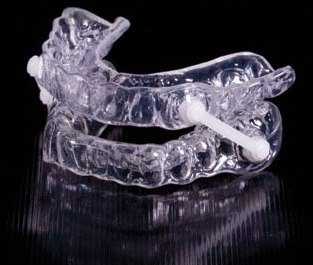 The “Silent-Nite” anti-snoring appliance works by gently repositioning your jaw while sleeping allowing more air to flow freely, providing you and your spouse with a restful sleep.
The “Silent-Nite” anti-snoring appliance works by gently repositioning your jaw while sleeping allowing more air to flow freely, providing you and your spouse with a restful sleep.The benefits of wearing the “Silent-Nite” anti-snoring appliance include:
- A removable appliance that is custom fit to your teeth
- Non-invasive procedure that does not involve surgical intervention
- Easily inserted over the upper and lower jaw
- Relatively small and easy to wear
Best of all it will give you that good night’s sleep you have been looking for.
Replacing Missing Teeth with Dentures
 We can help restore the form and function of your mouth if teeth have been lost with the use of removable artificial teeth. Dentures are removable replacements for missing teeth made with acrylic resin and sometimes metal for additional structural support. The acrylic teeth that are held in place by the gums, neighbouring teeth, clasps and/or dental implants.
We can help restore the form and function of your mouth if teeth have been lost with the use of removable artificial teeth. Dentures are removable replacements for missing teeth made with acrylic resin and sometimes metal for additional structural support. The acrylic teeth that are held in place by the gums, neighbouring teeth, clasps and/or dental implants.The general advantages of dentures include a relatively easy and quick way to replace missing teeth, depending on the design it can be very esthetic, and compared to other tooth-replacement options it is less expensive.
Dentures can replace all of your missing teeth (“Complete Denture”) or replace a few missing teeth (“Partial Denture”) with multiple variations of each type.
Partial Denture Design Options
Similar to bridges, partial dentures help to restore the loss of one or a few teeth. Here are a few design options.Partial dentures can be made of acrylic only or made with a metal framework with teeth bonded to it.
Full Denture Design Options
Complete Dentures are used if there are no teeth left in the mouth to support them, in which case they are held in place by either the suction effect created by the jaw bones and gums or they can be retained by dental implants.
Full dentures help to restore the loss of all teeth in the upper and/or lower jaws. Here are a few design options.Conventional full upper and lower acrylic dentures are removable and supported by healthy gums and bone.
Since the gums and bone shrink over time, their retentive ability diminishes and results in uncomfortable ill-fitting dentures. The current standard of care is retaining these artificial teeth with dental implants, serving to maintain excellent function.
Full upper and lower dentures are retained by dental implants. The number and position of dental implants is dependent upon the quality and quantity of the available bone.

